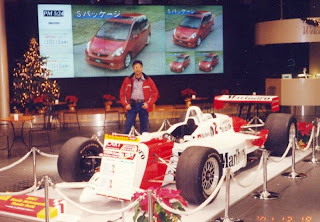During my visit to Banglore in August 2008, I tempted to buy samosas, my fav, on the way from a local vendor to pass my time during the travel. There I just noticed this interesting article published on that (news)paper bag contating samosas. Believe me, I just forgot samosas to eat what was inside & lost into comparing the written texts with actual happenings in our lives / surroundings.
Some employees grow fast in their careers, seem talented and sound confident. But they often spend sleepless nights fearing that people will soon discover their incompetence. If you are one of these, then you are suffering from impostor syndrome! Now this is not a psychological disorder; it is just a phenomenon or experience.
But what is this impostor syndrome? Impostor syndrome is a feeling that you don't really deserve the success you achieved. You start attributing your success to luck, timing or incompetence of your competitors.
You think that you have cheated others by impressing upon them that you are capable.
But the fact is, you are actually capable !
Two psychologists, Dr. Pauline Rose Clance and her colleague Dr. Suzanne Imes first coined this term 30 years ago.
This syndrome is so relevant to the corporate world that Clance's book ‘The Impostor Phenomenon: When Success Makes You Feel Like a Fake’ is still read by many across the world.
 Impostor syndrome or phenomenon is usually a result of not understanding what is needed to be in the state you are in. For example, you are promoted as a CEO. You are in that position because you proved that you have the abilities to be in that role. But if you feel that you should know everything about being a successful CEO, you think that you don't deserve the promotion.
Impostor syndrome or phenomenon is usually a result of not understanding what is needed to be in the state you are in. For example, you are promoted as a CEO. You are in that position because you proved that you have the abilities to be in that role. But if you feel that you should know everything about being a successful CEO, you think that you don't deserve the promotion.Sometimes this feeling is the result of family influence and upbringing.
When there are better achievers at home or when the family members do not hail your success, you may feel that people at the workplace are overestimating you. Some parents do not appreciate their children when they perform well in their academics thinking that they will feel complacent and stop working if they do so. They even tell them that it was not a big achievement. But, they fail to realise that they are actually making their children believe that they cannot be successful.
Impostor phenomenon can do much more harm than one can imagine. Basically, it does not allow you to enjoy your success.
At work you will not have the energy and enthusiasm required to do your job. In the words of Clance, "People begin to feel, what's the use of working so hard, because I never feel a sense of accomplishment." You are haunted by the thought that, you will soon face a major failure.
Added to this is the fear that you will lose face when people will find out that you are incapable.
You start criticizing yourself and sometimes, even turn down much coveted offers.
Another way people cope with this is aiming for perfection and over indulging in work. But impostor syndrome can actually make you fail. So, you must tackle it as soon as you realise it.
Realising that you are suffering from impostor syndrome is half curing it. Overcome the fear and tell yourself that you are worth your salt. Dr. Valerie Young, a professor and author of the book ‘How to Feel as Bright and Capable as Everyone Seems to Think You Are’ says, "People may feel like impostors because they don't always know the answer, but you don't have to always have the answer to be successful you just need to know how to find the resources to get the job done." List your positive traits, skills and accomplishments. They make you feel that you deserve the success you achieved and give you the required confidence to proceed. Talk to friends or mentors about your fears because they can help you out with positive reinforcement.
Everyone experiences impostor syndrome at some point in life, while some experience it more frequently.
It usually surfaces when a person achieves an academic scholarship, an award, a promotion, recognition or a coveted assignment.












 This is not just a matter of having sacked fewer people. Japanese firms have encouraged the entire work force to help in reaching cost-reduction targets. In many companies, the walls are decorated with posters showing progress in cost control. At Topcon, an optical company, for example, the slogan is, "
This is not just a matter of having sacked fewer people. Japanese firms have encouraged the entire work force to help in reaching cost-reduction targets. In many companies, the walls are decorated with posters showing progress in cost control. At Topcon, an optical company, for example, the slogan is, "

























